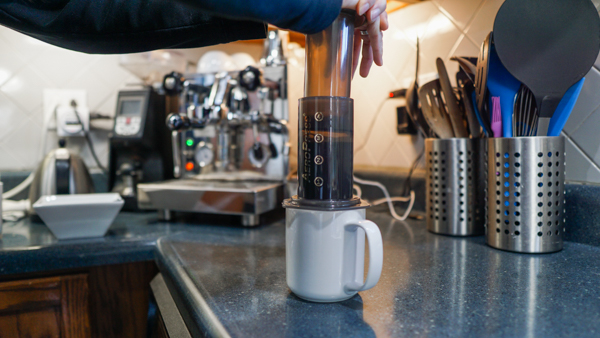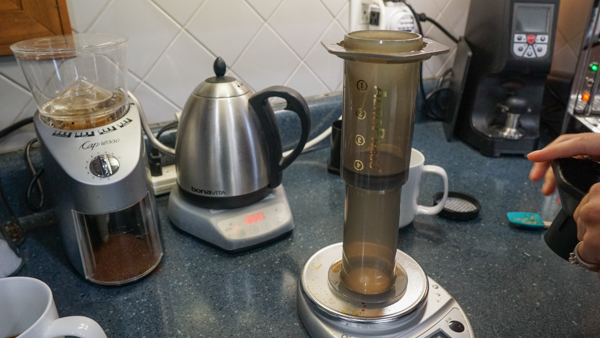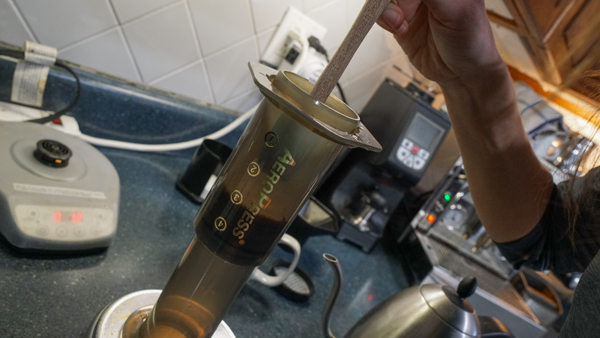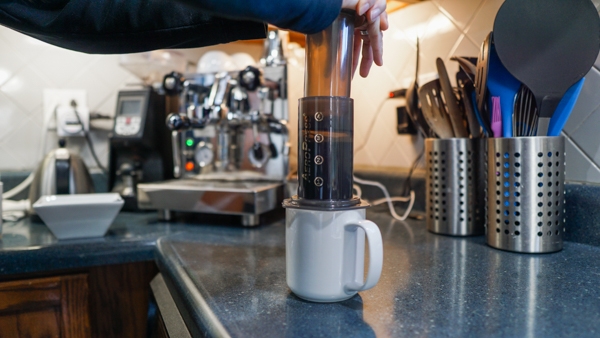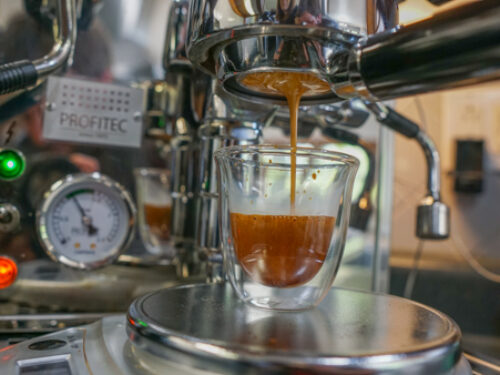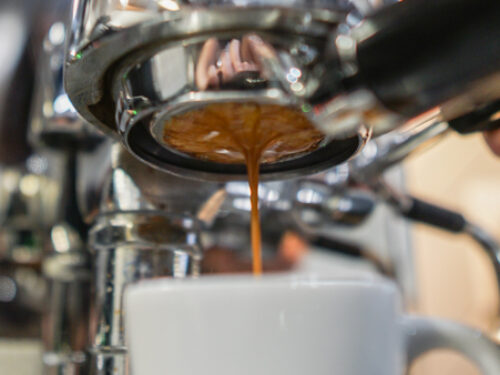Disclaimers: Our site uses demographic data, email opt-ins, display advertising, and affiliate links. Please check out our Terms and Conditions for more information.
When it comes to brewing a cup of coffee with an Aeropress, the process seems simple enough. Wet your filter paper, screw it onto the base of the unit, add coffee grounds, bloom, add water, steep, and plunge (check out our full Aeropress recipe for specifics).
Apart from tweaking your grind, temperature, and brewing time for any given roast, there is little technique involved in this full-contact brewing process.
While you could simply follow this rough set of steps and end up with a good brew, many baristas utilize an inverted Aeropress brewing method that switches things up ever-so-slightly. In this process instead of brewing with the base of the unit at the bottom, the plunger is first added onto the top of the unit, the entire thing is flipped, and then grounds and water are added to steep. When the brewing is finished, the filter paper section is screwed on last before the unit is inverted and plunged.
There are a number of reasons we've seen given as to why this is better, but we were curious if this made much of a difference in the final cup- so we devised a test to compare the two and see what happens.
Aeropress Brewing – Inverted vs Upright
For this test, we wanted brew two identical cups of coffee with Aeropress using the traditional upright process and the inverted process as described above. We used the following ratio for both tests:
- Roast: A medium roasted Tanzanian from a local coffee shop.
- Coffee: 20 g per serving
- Water: 250 g per serving
- Contact Time: 75 seconds plus plunging
- Temperature: 205°F
- Grind: Fine (4 out of 16 on Grinder)
The two configurations appeared visually as:
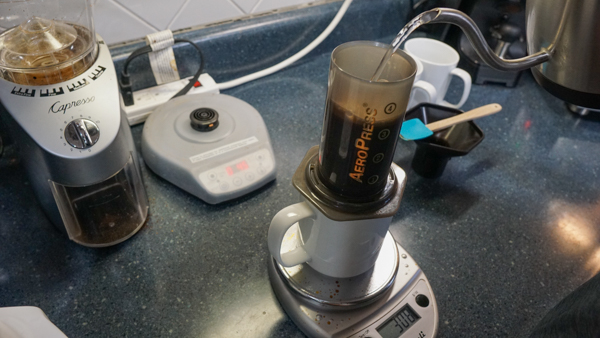
Inverted Brewing
The actual brewing process between these two methods is quite similar. In the upright method, the grounds rest on the filter paper and base segment, whereas in the inverted method they rest on the plunger.
The first difference we noticed between these two methods is that the inverted method is slightly more precarious and top-heavy. That being said, as there is no solid connection point between the Aeropress and your coffee mug in the upright method, you may also notice some unsteadiness when adding on the plunger towards the end of brewing as well.
Likewise, depending on how far you push the plunger in the liquid level can get dangerously close to the top of the unit (insert the plunger as minimally as you can to form a seal- if you've pushed close to the #4 marker you may have gone too far).
In the upright process, we noticed that the coffee started passing through the filter paper somewhat steadily once we hit about 200 g of water. The vertical water column had enough water pressure to force the coffee to pass through the filter. Likewise, when we added the plunger onto the Aeropress towards the end of brewing, this added even more pressure into the system which caused even more of the coffee to filter through prematurely.
In two tests, one where we inserted the plunger at the end of brewing and one where we inserted it right after adding all of the water, the loss of water through the upright brewing process was 10% and 25% respectively- a pretty significant amount. As we maintained a good seal with the plunger in the inverted process, our water loss was essentially zero, and 100% of the water was in contact with the grounds throughout the entire brewing process.
Qualitatively, the coffee that filtered out prematurely in the upright process was significantly under-extracted. When comparing the two finished cups, the inverted brew felt like it had just a bit more body in it, even if ever-so-slightly, which is likely directly related to the premature filtration in the upright brew.
Beyond this, there were few if any discernable differences between the brewing processes. We prefer a fuller-bodied brew and found the differences to be enough to justify continuing with the inverted method, but this one is more personal preference more than anything. So if you find that your Aeropress brew is tasting a bit weaker or lighter-bodied than you like, switching to the inverted brewing method may be an option to consider.
Takeaways
- Filtration in the upright brewing process begins prematurely while water is still being added.
- The force of inserting the plunger during the upright brew process further facilitates this early filtration.
- Premature water loss in the upright brew process can be 10-25%. Percent loss can vary based on your total brew time.
- The premature filtration in the upright method results in a slightly weaker cup of coffee compared to the inverted process. The degree this is noted may vary from coffee to coffee.
Do you have a favorite way to make coffee with an Aeropress? Comment below to share!

